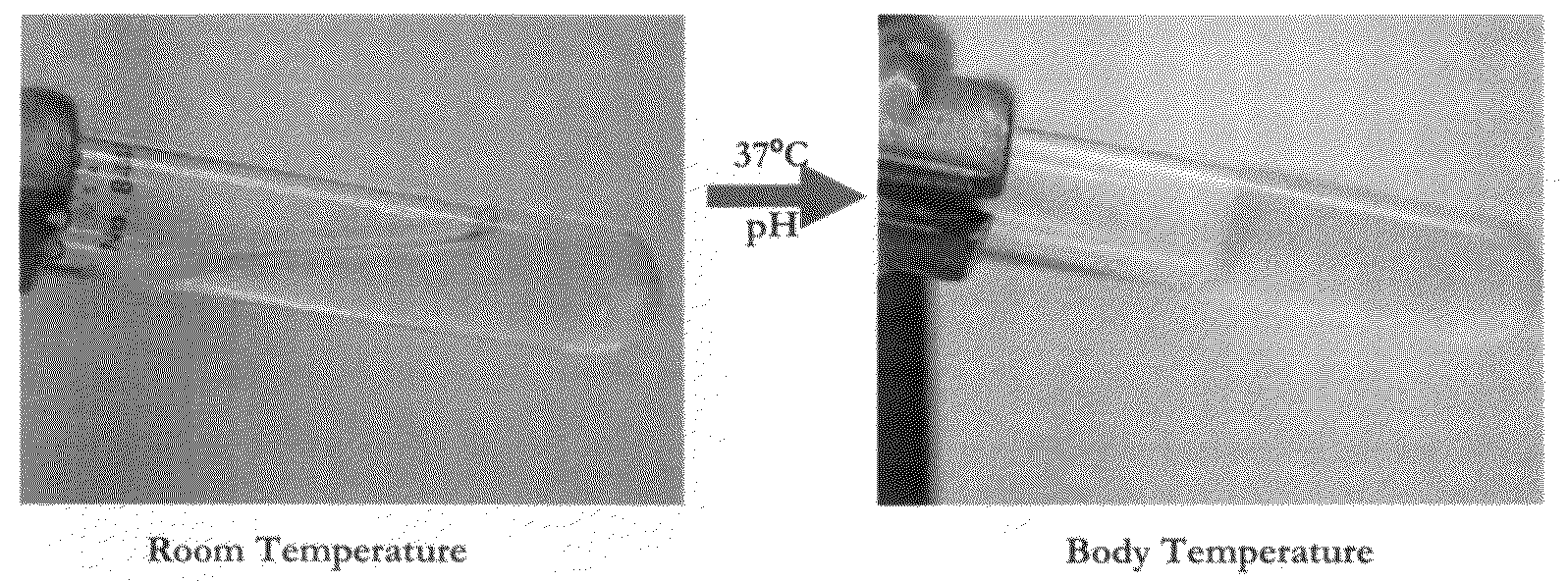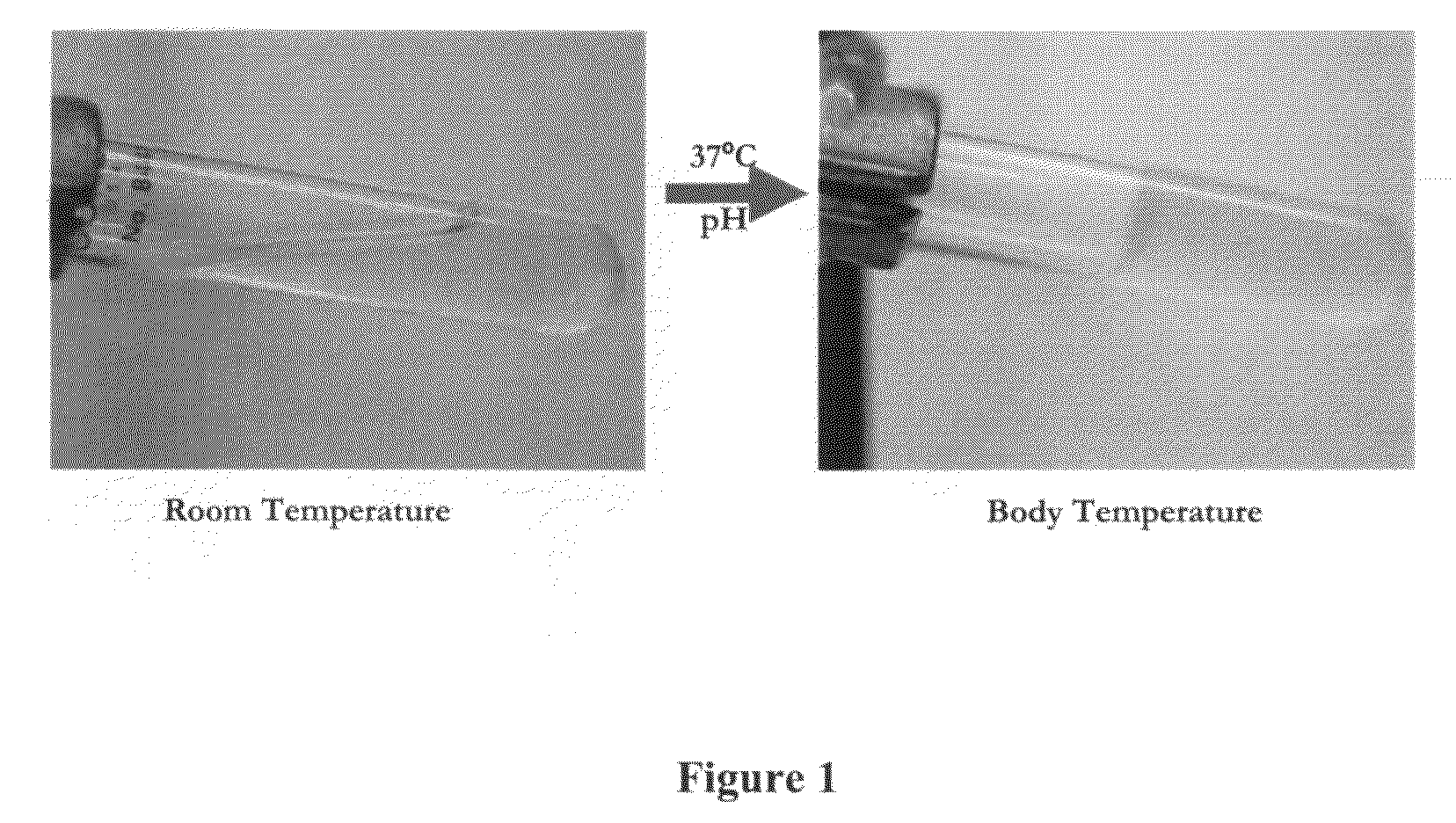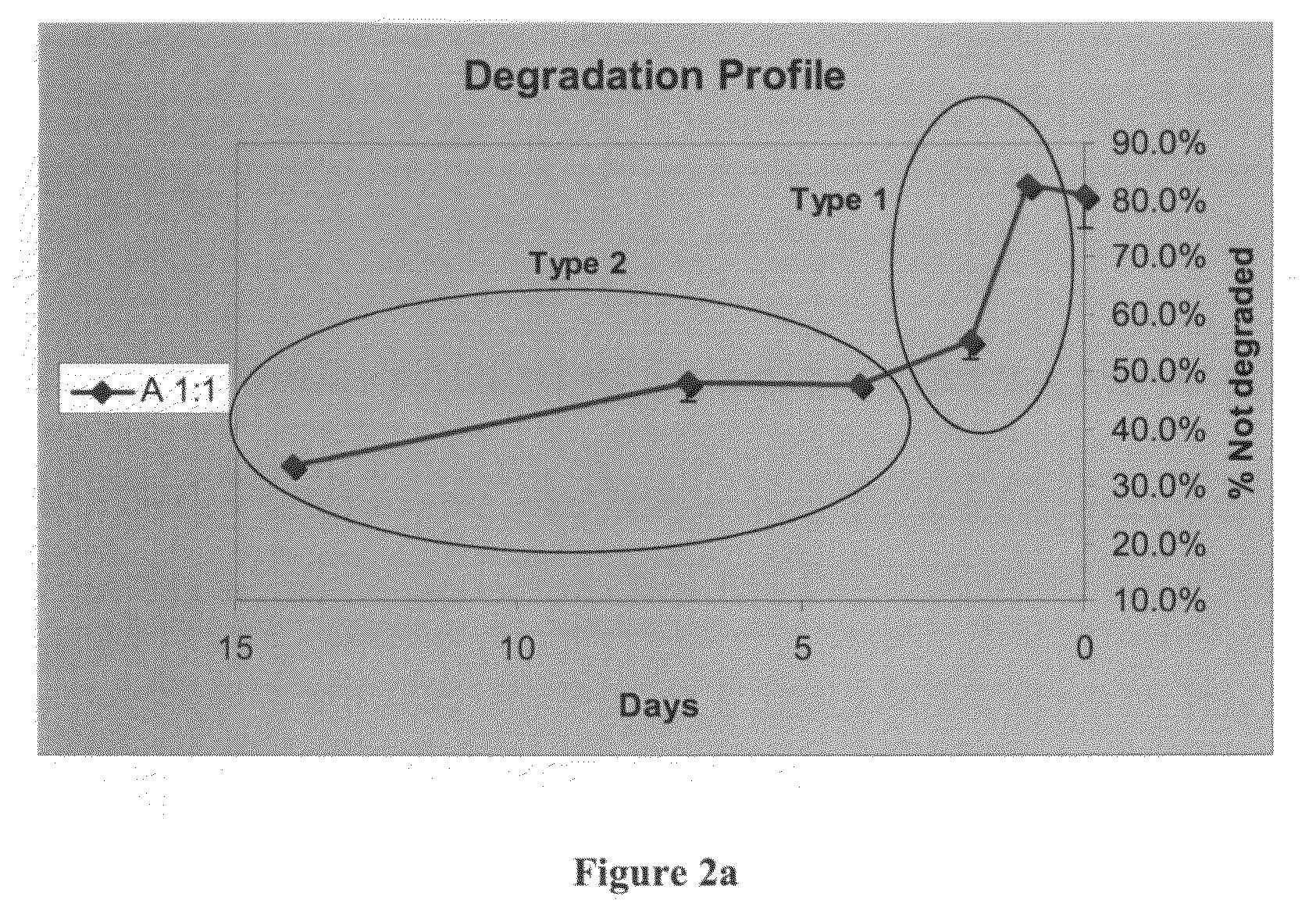Novel injectable chitosan mixtures forming hydrogels
a polysaccharide hydrogel and mixture technology, applied in the field of positive-charge polysaccharide hydrogels, can solve the problems of product limitations, affecting the effect of chitosan mixture, etc., and achieve the effect of controlling various physical conditions
- Summary
- Abstract
- Description
- Claims
- Application Information
AI Technical Summary
Benefits of technology
Problems solved by technology
Method used
Image
Examples
example 1
Preparation of Chitosan Hydrogel
[0183]Chitosan with a degree of acetylation of 15% and molecular weight of 65 KDa (Koyo, Japan) was dissolved by mixing with 0.9% HCl for 24 hours, forming a type 1 chitosan solution having a chitosan concentration of 3% (w / v).
[0184]Homogenously deacetylated chitosan with 51% deacetylation and molecular weight of 220 KDa (Koyo, Japan) was dissolved by mixing with 0.9% HCl for 24 hours, forming a type 1 chitosan solution having a chitosan concentration of 3% (w / v).
[0185]The type 1 and type 2 chitosan solutions were mixed according to the following ratios of type-1 to type-2: 1:1, 1:2 and 1:3, titrated to pH 6.8 and left for 24 hours at 4° C., followed by further titration to pH 7.2 at 4° C. with sodium hydroxide.
[0186]The resulting composition was liquid at room temperature. Upon increasing the temperature to 37° C. and raising the pH to 7.4, the liquid solution formed a stable semi-solid gel, as illustrated in FIG. 1.
example 2
Degradation Profiles of Chitosan Gels
[0187]Pseudo-thermosetting hydrogel (3% w / v) was prepared at a ratio of 1:1 w / w of homogenous (type 2) to non-homogenous chitosan (type 1), as described in Example 1 above.
[0188]One gram of the gel was placed in 50 ml plastic tubes, in triplicate.
[0189]Aliquots of 3 ml of 10% bovine serum media were added to each tube for predefined times intervals (1, 2, 3, 4, 5, 6, and 7 days). At the end of each time interval, the gel was washed 3 times over a period of 24 hours by repeatedly adding 50 ml of distilled water, leaving at room temperature for a few hours and removing the water. The washing process removed all soluble materials from the gel.
[0190]The gel was then frozen, lyophilized and weighed. Weight degradation was calculated from the change in weight of the samples, as a function of time interval. The degradation of the hydrogel by serum enzymes is shown in FIGS. 2a and 2b.
[0191]Two distinct types of degradation kinetics are shown in FIG. 2a,...
example 3
Slow Release of Proteins by Chitosan Gels
[0194]In order to study the potential of the chitosan pseudo thermosetting hydrogel presented herein as a slow release vehicle, hemoglobin and bovine serum albumin (BSA) were used as solutes. These compounds are well accepted as protein standards.
[0195]To one ml solution containing a chitosan mixture as described in Example 1 above, in which the final concentration of both chitosans is 3.5%, a 25 μl aliquot of BSA or 40 μl of hemoglobin were added, resulting in a final concentration of 1 mg / ml and 4 mg / ml protein in the hydrogel, respectively. The protein-containing hydrogels were incubated in 3 ml PBS for one week at 37° C. The media was replaced daily, and the amounts of the released protein from the hydrogel was measured, as shown in FIGS. 3-7.
[0196]As shown in FIG. 3, in all the tested series, high amounts of hemoglobin were initially released and the rate of release decreased with time. No initial burst was shown.
[0197]BSA showed the sam...
PUM
| Property | Measurement | Unit |
|---|---|---|
| molecular weight | aaaaa | aaaaa |
| molecular weight | aaaaa | aaaaa |
| molecular weight | aaaaa | aaaaa |
Abstract
Description
Claims
Application Information
 Login to View More
Login to View More - R&D
- Intellectual Property
- Life Sciences
- Materials
- Tech Scout
- Unparalleled Data Quality
- Higher Quality Content
- 60% Fewer Hallucinations
Browse by: Latest US Patents, China's latest patents, Technical Efficacy Thesaurus, Application Domain, Technology Topic, Popular Technical Reports.
© 2025 PatSnap. All rights reserved.Legal|Privacy policy|Modern Slavery Act Transparency Statement|Sitemap|About US| Contact US: help@patsnap.com



